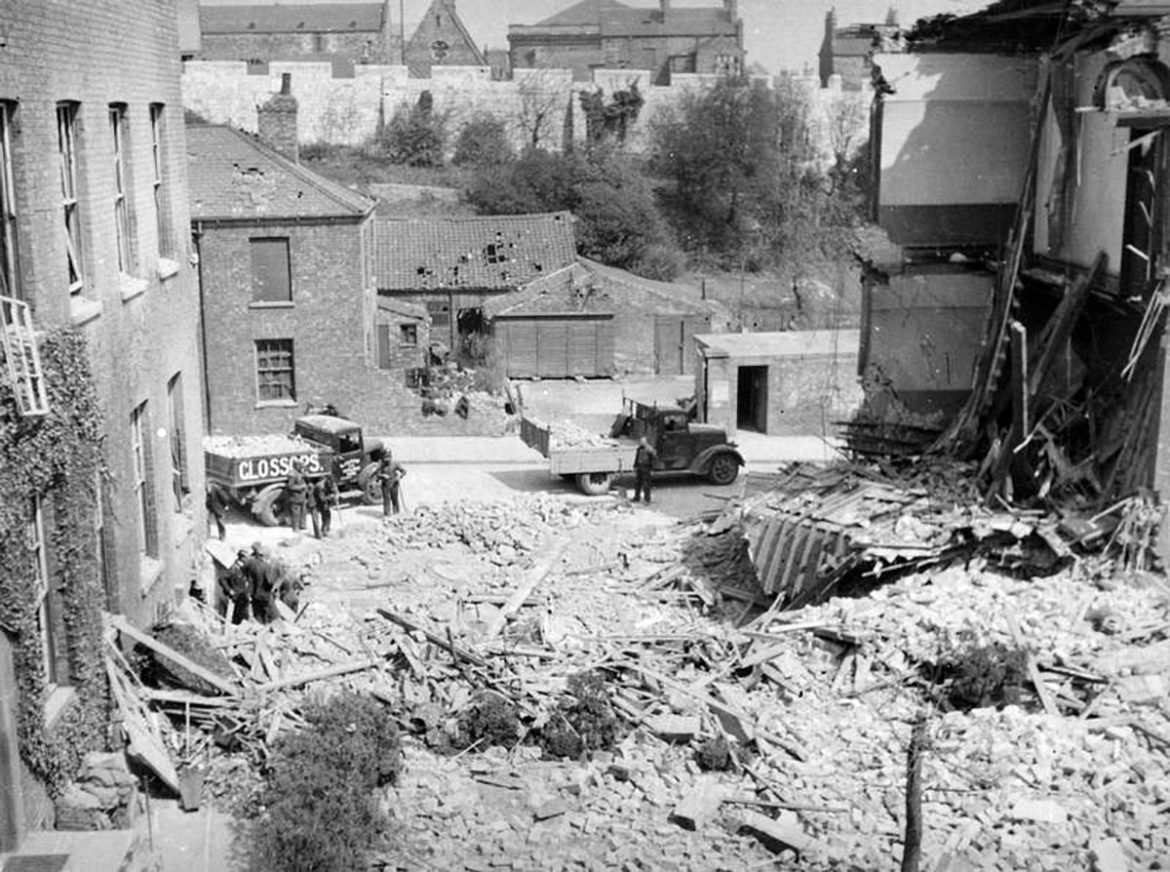Alan Amour walks into the main hall of the Bar Convent, where visitors are enjoying a morning coffee in the tranquil surroundings, and points down to the tiled floor.
“The roof was all down here on the floor,” he says, “Just rubble.”
The hall is part of the thriving Living Heritage Centre at the Bar Convent but 75 years ago this week it was a very different situation.
Telegram boy
On the night of the April 28 1942 part of the convent was destroyed by a Luftwaffe bomb in what became known as the Baedeker Blitz. Alan was a 14-year-old telegram delivery boy in York when the raid took place.
“People used telegrams to send messages because phones were pretty much non-existent,” he says. “I would usually deliver about five or six telegrams each day.
“But on this day, when I went to the telegraph office at Lendal Post Office to collect them, the room was full of telegrams from all over the country. People were anxious to get in touch with loved ones.”


Alan, now 89, delivered telegrams to the Bar Convent the morning after the bombs fell.
“It was quite shocking to the see that part of the building on Nunnery Lane just completely gone. Just blown away. I just put my telegrams down and left.
Bombing runs

The Baedeker Raids were a series of bombing runs against British targets than the German air force carried out.
After the RAF had destroyed mediaeval buildings in Rostock and Lubek, the Luftwaffe chose to hit English cites with no strategic value but which were regarded as historic and picturesque.
They made their selection from within the pages of Baedeker’s Britain, a 1930s travel guide. This small red book contained everything from plans of cathedrals to notes on etiquette for travellers.
The Nazis sent through it, picking towns and cities with a three star rating or above, including York, Exeter and Norwich. These were then bombed.
Five sisters died

Ninety-four people were killed when the Baedeker Raids hit York at the end of April 1942.
At the Bar Convent a bomb came down through one corner of the building on Nunnery Lane.
It didn’t go off but one sister lay injured across the unexploded, ticking device and she implored the others to keep away.
The sisters ignored her and as they rushed to her aid the bomb detonated. In all, five sisters died that night. They are buried in the private cemetery at the rear of the building, in the grounds of what is now All Saints School.

Thankfully none of the pupils of the school were hurt.
“They were in the cellar, quite safe,” says Sr Ann Stafford from the convent. “But for the Community it was a tremendous shock and a number of them left the city for a while afterwards.”
The building was extensively damaged and the “join” in the brickwork can still be seen on Nunnery Lane. To most passers-by it means nothing, but the scar is a reminder of the night the horrors of the Second World War came to York.
